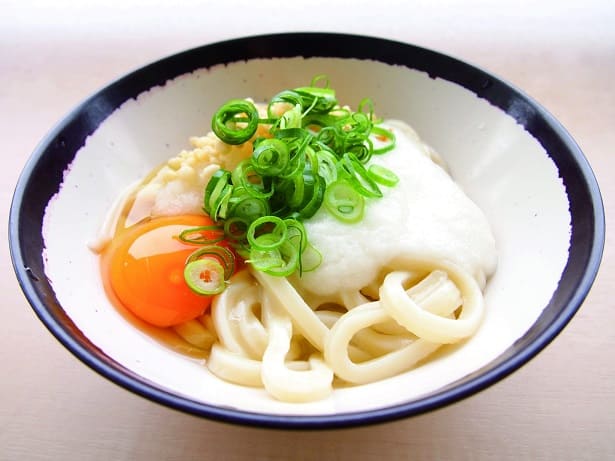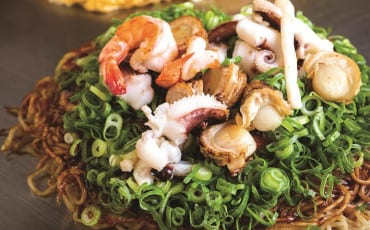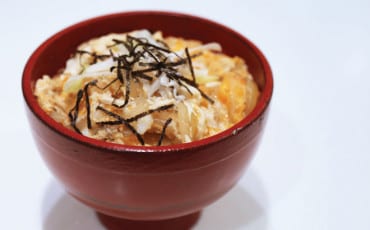- OISHII
- OISHII Wiki
- Ingredients
- Sanuki udon
OISHII Wiki
Ingredients
Sanuki udon
Hailing from Kagawa Prefecture located in southern Japan’s Shikoku island, sanuki udon is the most widely available type of udon today. It is synonymous with its hometown, so much so that Kagawa itself is affectionately known as Udon Prefecture.

Sanuki udon is distinctively square and flat, its texture firm and chewy. The udon gets its firmness from the wheat it uses—sanuki no yume—which is only produced in the prefecture.
Kagawa’s unique climate, characterised by mild weather and low rainfall, is key in influencing the other essential components that make sanuki udon special. Sea salt used in the production of sanuki udon goes through solar evaporation, a process which allows the salt to retain its natural taste. Small anchovies, bred in fishing farms all over Kagawa, are brewed in broth for a unique flavour and to better bring out the umami of the udon.
Eating sanuki udon in Kagawa is an experience in itself simply because it can be served in so many ways, hot or cold. The most common is as kake udon, with hot piping broth. This also happens to be how udon connoisseurs take their sanuki udon. Or have kamaage udon, which has the noodles boiled with hot water and served with a strong dashi dipping sauce. You can also try kamatama udon, steaming hot noodles topped with a raw egg and soy sauce, or bukkake udon, which is served either hot or cold and with less but thicker broth compared to kake udon.
Being spoilt for choice is only half the fun in Japan’s udon capital. Kagawa is home to more than 600 udon shops, many of which are self-service establishments where you get to choose your own type of noodle and serving portion, before adding the broth, toppings and side dishes to your stomach’s content. Not enough udon? In Kagawa, you can chill with udon ice cream, learn to make your own sanuki udon at an udon school or even book an udon taxi, and be guided by your driver and udon expert as he shows you the best-kept secrets in town.









